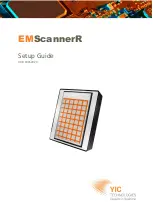
57
Advanced Feedback Suppression (AFS) Module
Feedback is caused when an in-phase audio loop is created between an input transducer (such as a guitar pickup or
microphone) and an output transducer (a loudspeaker). The VENU360 includes the exclusive AFS
™
(Advanced Feedback
Suppression
™
) algorithm to help combat this dreadful phenomenon.
The updated AFS algorithm in the VENU360 (first introduced in the DriveRack PA2) offers the following enhancements:
• It’s faster at eliminating the offending feedback frequency.
• It can better determine what is actually feedback, making it far less likely to set false triggers on feedback-like audio
sources, such as a flute.
• It can better determine how much attenuation is required to notch out the feedback, resulting in notch filters which aren’t
as deep and even less audible.
• It prevents the filters from being too narrow to tackle feedback at lower frequencies.
• It has better frequency resolution, which provides pinpoint accuracy and uses the narrowest filters possible.
• When lifting Live filters, the filters are lifted more gradually to better determine if it is safe to lift the filter, preventing
blaring feedback from suddenly returning.
AFS uses precision frequency detection and state-of-the-art processing to determine the exact range of feedback frequencies
to remove (instead of indiscriminately removing large sections of audio). In the past, graphic equalizers were used to eliminate
feedback from a system. This was an acceptable method for eliminating feedback, but when this method is put up against
precision notch filters, such as those found in AFS, it becomes very evident that using graphic equalizers for this task severely
affects the tone of the system. With AFS, the precision filters remove only a fraction of the frequency spectrum, eliminating the
feedback with far less audible artifacts. The below diagram shows a comparison of filter widths between the AFS filters and
conventional 1/3 octave EQ filters.
Filter Precision Comparison Chart
TIP:
AFS works best when the signal entering the VENU360’s inputs is sufficient. This requires proper gain staging
between the mixer and VENU360. If the signal level is too low, AFS may be slow to respond to feedback. See
‘Manually
Optimizing A System Using The VENU360’ on page 44
for further information on gain structure and manually
ringing out the system with AFS
.
Содержание DriveRack VENU 360
Страница 1: ...Owner s Manual ...
















































